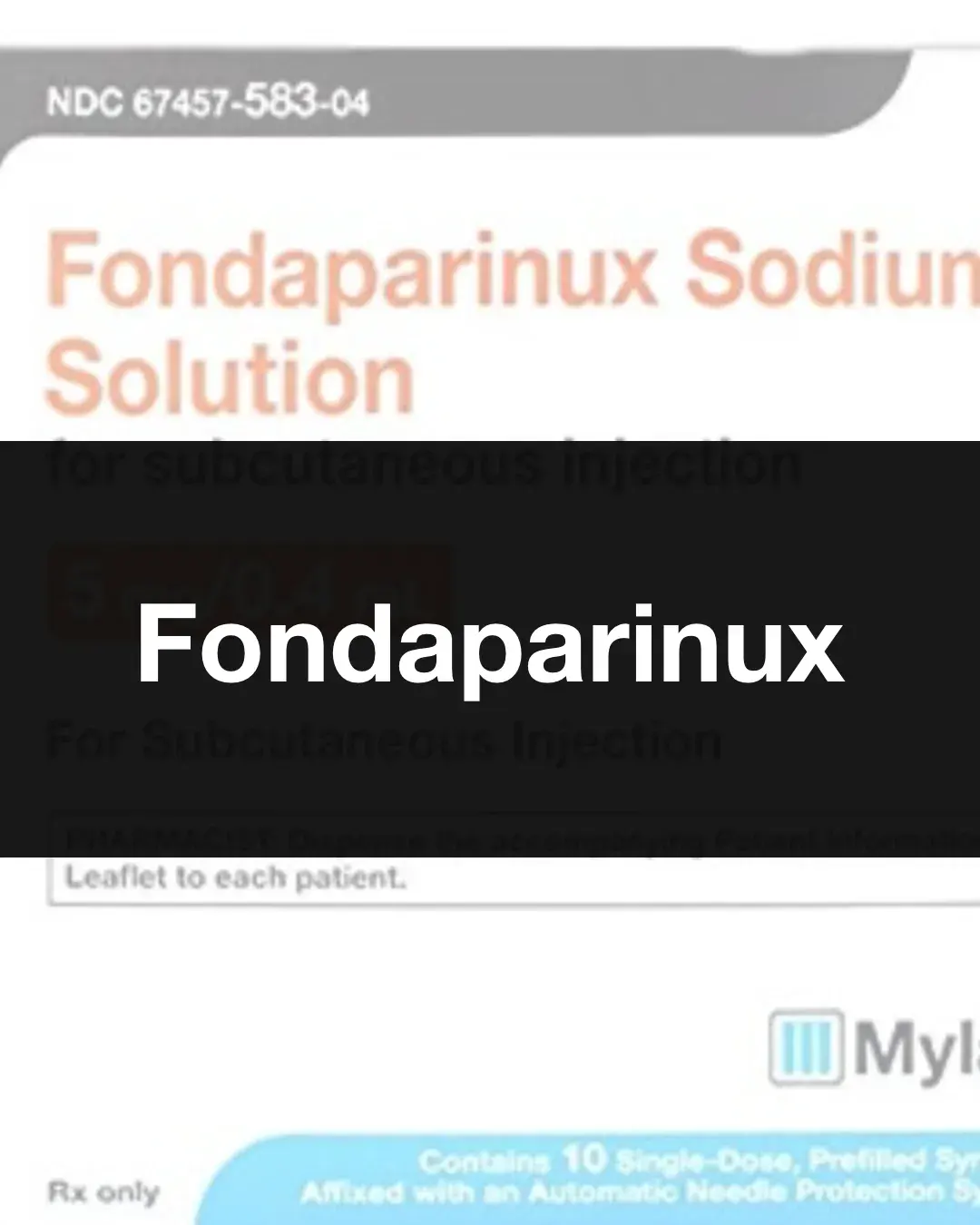Fondaparinux is a synthetic pentasaccharide that exerts its anticoagulant effect by binding to antithrombin III, inducing a conformational change that selectively inhibits activated factor X (Xa). Unlike unfractionated heparin or low molecular weight heparins, fondaparinux does not inhibit thrombin (factor IIa) and is too small to promote platelet activation, making the risk of heparin-induced thrombocytopenia (HIT) negligible. This specificity also gives fondaparinux a predictable dose-response relationship and favorable pharmacokinetics with complete bioavailability after subcutaneous administration, a long half-life (~17–21 hours), and once-daily dosing without routine monitoring.
It’s FDA-approved for the prevention and treatment of venous thromboembolism (VTE), including deep vein thrombosis (DVT) and pulmonary embolism (PE). It is sometimes used off-label in patients with a history of HIT. In trials like PENTAMAKS and MATISSE, fondaparinux demonstrated noninferiority to enoxaparin and heparin, with lower bleeding risk in some subgroups.
Renal clearance mandates caution in patients with impaired kidney function (contraindicated if CrCl <30 mL/min), and while there’s no specific reversal agent, its short-term use in a monitored setting can still be advantageous in select high-risk surgical patients.






